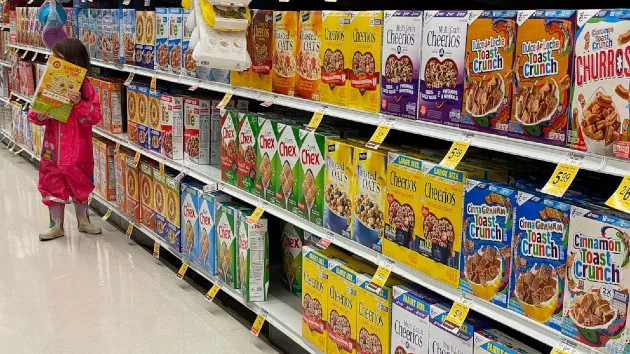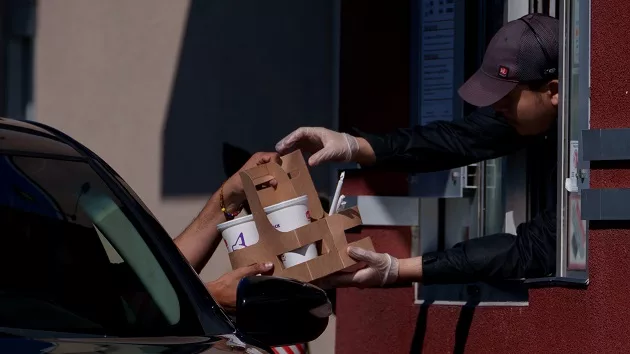
(NEW YORK) — Breakfast foods maker General Mills, the brand behind familiar cereals like Cheerios, Lucky Charms and Wheaties, may not be a consumer favorite anymore as the company experiences slowing sales and increasing price hikes.
In the company’s latest quarterly financial report, General Mills’ CEO Jeff Harmening blamed the drop on “stronger-than-anticipated value-seeking behaviors,” meaning that people are finding cheaper alternatives to high-priced cereals.
The pandemic turned around what had until then been a steady slide in cereal sales, as everyone ate breakfast at home. During 2020, General Mills reported a 5% boost in sales, but sales in 2021 fell 8.7% and nearly a further 4% last year.
General Mills also raised its prices in order to offset pandemic-related supply chain issues and inflation.
Now that Americans are once again out and about, and as a result making breakfast choices outside the cereal aisle, they’re less inclined to pay premium prices for their usual cereal. Instead, sales of cheaper generic store brands spiked 20%.
General Mills has now forecast that the company’s sales may not be able to return to its usual volume until next summer, at the soonest.
On top of tepid consumer demand for the brand-name cereals, shoppers are becoming increasingly aware of how much bang they are actually getting for their buck.
“Many brands are shrinking the size or weight of their products and charging the same price,” smart shopping expert Trae Bodge told ABC News’ Good Morning America.
She encouraged shoppers to always check and compare unit prices when selecting items off the shelf at a grocery store.
“‘Shrinkflation’ is a term used to describe implicitly increasing the price of an item by slightly decreasing the amount or quantity in a package,” Steve Reed, an economist at the Bureau of Labor Statistics, previously told ABC News.
While the Bureau of Labor Statistics (BLS) doesn’t have any evidence on why this occurs, or insight into seller strategies, Reed said, “the conventional explanation would be that consumers may not notice small decreases in size or quantity, or react less negatively to them compared to an explicitly higher price.”
The BLS does attempt to compute for shrinkflation, however, in its Consumer Price Index, which measures what consumers pay for everyday goods and services and is often used as an inflation barometer, according to Reed.
Copyright © 2023, ABC Audio. All rights reserved.






